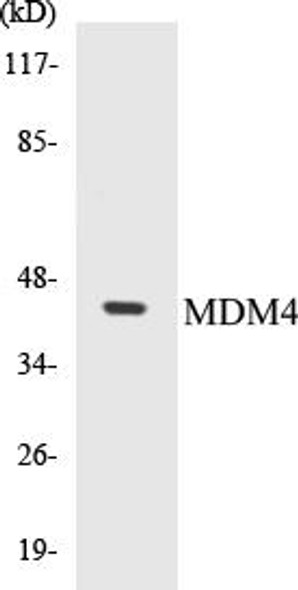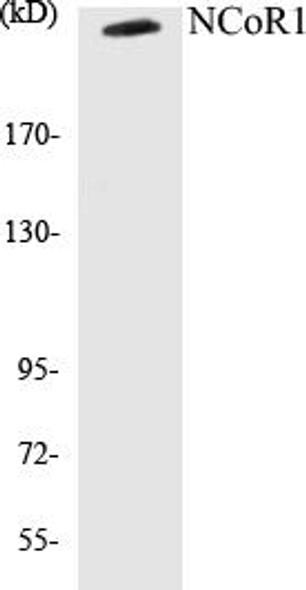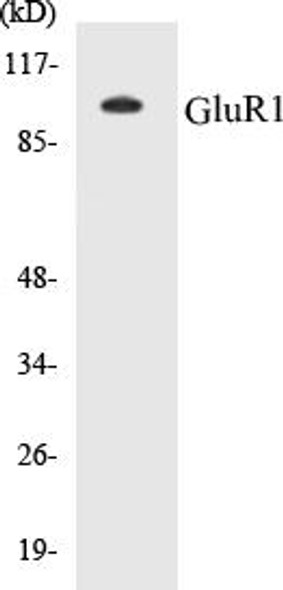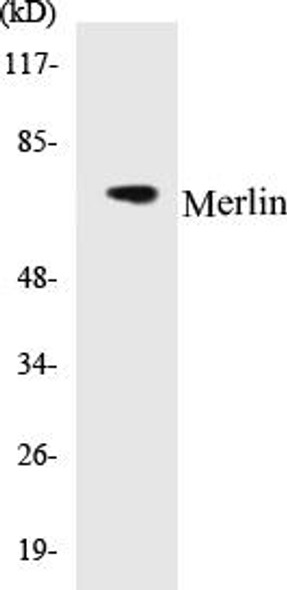ACC1 Colorimetric Cell-Based ELISA Kit
- SKU:
- CBCAB00154
- Product Type:
- ELISA Kit
- ELISA Type:
- Cell Based
- Research Area:
- Metabolism
- Reactivity:
- Human
- Mouse
- Rat
- Detection Method:
- Colorimetric
Description
ACC1 Colorimetric Cell-Based ELISA Kit
The ACC1 Colorimetric Cell-Based ELISA Kit is specifically designed for the detection of ACC1 (Acetyl-CoA carboxylase 1) levels in cell cultures. This kit offers high sensitivity and accuracy, providing researchers with reliable and reproducible results for their studies.ACC1 is a key enzyme involved in fatty acid synthesis and plays a critical role in cellular metabolism. Dysregulation of ACC1 has been linked to various metabolic disorders and diseases, making it an important target for research and drug development.
With the ACC1 Colorimetric Cell-Based ELISA Kit, researchers can accurately measure ACC1 levels in cell cultures, allowing for a better understanding of its function and potential therapeutic implications. This kit is essential for studying metabolic pathways, lipid metabolism, and related diseases, providing valuable insights for scientific advancements and medical applications.
| Product Name: | ACC1 Colorimetric Cell-Based ELISA |
| Product Code: | CBCAB00154 |
| ELISA Type: | Cell-Based |
| Target: | ACC1 |
| Reactivity: | Human, Mouse, Rat |
| Dynamic Range: | > 5000 Cells |
| Detection Method: | Colorimetric 450 nmStorage/Stability:4°C/6 Months |
| Format: | 96-Well Microplate |
The ACC1 Colorimetric Cell-Based ELISA Kit is a convenient, lysate-free, high throughput and sensitive assay kit that can detect ACC1 protein expression profile in cells. The kit can be used for measuring the relative amounts of ACC1 in cultured cells as well as screening for the effects that various treatments, inhibitors (ie siRNA or chemicals), or activators have on ACC1.
Qualitative determination of ACC1 concentration is achieved by an indirect ELISA format. In essence, ACC1 is captured by ACC1-specific primary antibodies while the HRP-conjugated secondary antibodies bind the Fc region of the primary antibody. Through this binding, the HRP enzyme conjugated to the secondary antibody can catalyze a colorimetric reaction upon substrate addition. Due to the qualitative nature of the Cell-Based ELISA, multiple normalization methods are needed:
| 1. | A monoclonal antibody specific for human GAPDH is included to serve as an internal positive control in normalizing the target absorbance values. |
| 2. | Following the colorimetric measurement of HRP activity via substrate addition, the Crystal Violet whole-cell staining method may be used to determine cell density. After staining, the results can be analysed by normalizing the absorbance values to cell amounts, by which the plating difference can be adjusted. |
| Database Information: | Gene ID: 31, UniProt ID: Q13085, OMIM: 200350, Unigene: Hs.160556 |
| Gene Symbol: | ACACA |
| Sub Type: | None |
| UniProt Protein Function: | ACC1: a subunit of acetyl-CoA carboxylase (ACC), a multifunctional enzyme system. Catalyzes the carboxylation of acetyl-CoA to malonyl-CoA, the rate-limiting step in fatty acid synthesis. Phosphorylation by AMPK or PKA inhibits the enzymatic activity of ACC. ACC-alpha is the predominant isoform in liver, adipocyte and mammary gland. ACC-beta is the major isoform in skeletal muscle and heart. Phosphorylation regulates its activity. |
| UniProt Protein Details: | Protein type:Carbohydrate Metabolism - propanoate; Carbohydrate Metabolism - pyruvate; Ligase; EC 6.4.1.2; EC 6.3.4.14; Lipid Metabolism - fatty acid biosynthesis Chromosomal Location of Human Ortholog: 17q21 Cellular Component: actin cytoskeleton; cytoplasm; cytosol; mitochondrion; nucleolus Molecular Function:acetyl-CoA carboxylase activity; ATP binding; biotin carboxylase activity; metal ion binding; protein binding Biological Process: acetyl-CoA metabolic process; biotin metabolic process; carnitine shuttle; cellular lipid metabolic process; energy reserve metabolic process; fatty acid biosynthetic process; lipid homeostasis; multicellular organismal protein metabolic process; positive regulation of cellular metabolic process; protein homotetramerization; tissue homeostasis; triacylglycerol biosynthetic process; vitamin metabolic process; water-soluble vitamin metabolic process Disease: Acetyl-coa Carboxylase Deficiency |
| NCBI Summary: | Acetyl-CoA carboxylase (ACC) is a complex multifunctional enzyme system. ACC is a biotin-containing enzyme which catalyzes the carboxylation of acetyl-CoA to malonyl-CoA, the rate-limiting step in fatty acid synthesis. There are two ACC forms, alpha and beta, encoded by two different genes. ACC-alpha is highly enriched in lipogenic tissues. The enzyme is under long term control at the transcriptional and translational levels and under short term regulation by the phosphorylation/dephosphorylation of targeted serine residues and by allosteric transformation by citrate or palmitoyl-CoA. Multiple alternatively spliced transcript variants divergent in the 5' sequence and encoding distinct isoforms have been found for this gene. [provided by RefSeq, Jul 2008] |
| UniProt Code: | Q13085 |
| NCBI GenInfo Identifier: | 118601083 |
| NCBI Gene ID: | 31 |
| NCBI Accession: | Q13085.2 |
| UniProt Secondary Accession: | Q13085,Q6KEV6, Q6XDA8, Q7Z2G8, Q7Z561, Q7Z563, Q7Z564 Q86WB2, Q86WB3, B2RP68, |
| UniProt Related Accession: | Q13085 |
| Molecular Weight: | 269,999 Da |
| NCBI Full Name: | Acetyl-CoA carboxylase 1 |
| NCBI Synonym Full Names: | acetyl-CoA carboxylase alpha |
| NCBI Official Symbol: | ACACA |
| NCBI Official Synonym Symbols: | ACC; ACAC; ACC1; ACCA; ACACAD |
| NCBI Protein Information: | acetyl-CoA carboxylase 1 |
| UniProt Protein Name: | Acetyl-CoA carboxylase 1 |
| UniProt Synonym Protein Names: | ACC-alphaIncluding the following 1 domains:Biotin carboxylase (EC:6.3.4.14 |
| UniProt Gene Name: | ACACA |
| UniProt Entry Name: | ACACA_HUMAN |
| Component | Quantity |
| 96-Well Cell Culture Clear-Bottom Microplate | 2 plates |
| 10X TBS | 24 mL |
| Quenching Buffer | 24 mL |
| Blocking Buffer | 50 mL |
| 15X Wash Buffer | 50 mL |
| Primary Antibody Diluent | 12 mL |
| 100x Anti-Phospho Target Antibody | 60 µL |
| 100x Anti-Target Antibody | 60 µL |
| Anti-GAPDH Antibody | 60 µL |
| HRP-Conjugated Anti-Rabbit IgG Antibody | 12 mL |
| HRP-Conjugated Anti-Mouse IgG Antibody | 12 mL |
| SDS Solution | 12 mL |
| Stop Solution | 24 mL |
| Ready-to-Use Substrate | 12 mL |
| Crystal Violet Solution | 12 mL |
| Adhesive Plate Seals | 2 seals |
The following materials and/or equipment are NOT provided in this kit but are necessary to successfully conduct the experiment:
- Microplate reader able to measure absorbance at 450 nm and/or 595 nm for Crystal Violet Cell Staining (Optional)
- Micropipettes with capability of measuring volumes ranging from 1 µL to 1 ml
- 37% formaldehyde (Sigma Cat# F-8775) or formaldehyde from other sources
- Squirt bottle, manifold dispenser, multichannel pipette reservoir or automated microplate washer
- Graph paper or computer software capable of generating or displaying logarithmic functions
- Absorbent papers or vacuum aspirator
- Test tubes or microfuge tubes capable of storing ≥1 ml
- Poly-L-Lysine (Sigma Cat# P4832 for suspension cells)
- Orbital shaker (optional)
- Deionized or sterile water
*Note: Protocols are specific to each batch/lot. For the correct instructions please follow the protocol included in your kit.
| Step | Procedure |
| 1. | Seed 200 µL of 20,000 adherent cells in culture medium in each well of a 96-well plate. The plates included in the kit are sterile and treated for cell culture. For suspension cells and loosely attached cells, coat the plates with 100 µL of 10 µg/ml Poly-L-Lysine (not included) to each well of a 96-well plate for 30 minutes at 37°C prior to adding cells. |
| 2. | Incubate the cells for overnight at 37°C, 5% CO2. |
| 3. | Treat the cells as desired. |
| 4. | Remove the cell culture medium and rinse with 200 µL of 1x TBS, twice. |
| 5. | Fix the cells by incubating with 100 µL of Fixing Solution for 20 minutes at room temperature. The 4% formaldehyde is used for adherent cells and 8% formaldehyde is used for suspension cells and loosely attached cells. |
| 6. | Remove the Fixing Solution and wash the plate 3 times with 200 µL 1x Wash Buffer for five minutes each time with gentle shaking on the orbital shaker. The plate can be stored at 4°C for a week. |
| 7. | Add 100 µL of Quenching Buffer and incubate for 20 minutes at room temperature. |
| 8. | Wash the plate 3 times with 1x Wash Buffer for 5 minutes each time. |
| 9. | Add 200 µL of Blocking Buffer and incubate for 1 hour at room temperature. |
| 10. | Wash 3 times with 200 µL of 1x Wash Buffer for 5 minutes each time. |
| 11. | Add 50 µL of 1x primary antibodies (Anti-ACC1 Antibody and/or Anti-GAPDH Antibody) to the corresponding wells, cover with Parafilm and incubate for 16 hours (overnight) at 4°C. If the target expression is known to be high, incubate for 2 hours at room temperature. |
| 12. | Wash 3 times with 200 µL of 1x Wash Buffer for 5 minutes each time. |
| 13. | Add 50 µL of 1x secondary antibodies (HRP-Conjugated AntiRabbit IgG Antibody or HRP-Conjugated Anti-Mouse IgG Antibody) to corresponding wells and incubate for 1.5 hours at room temperature. |
| 14. | Wash 3 times with 200 µL of 1x Wash Buffer for 5 minutes each time. |
| 15. | Add 50 µL of Ready-to-Use Substrate to each well and incubate for 30 minutes at room temperature in the dark. |
| 16. | Add 50 µL of Stop Solution to each well and read OD at 450 nm immediately using the microplate reader. |
(Additional Crystal Violet staining may be performed if desired – details of this may be found in the kit technical manual.)










